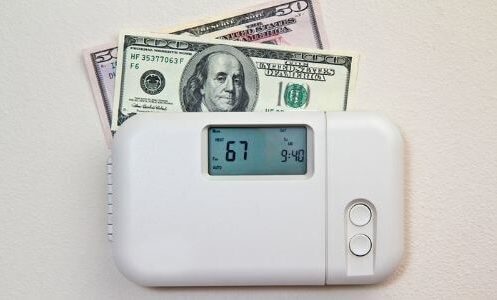Heating one’s own home so often feels like it is at the mercy of your gas and electric company. Especially if you live in a building with a boiler that is turned on by your landlord, when you get to turn the heat up is in someone else’s hands. That is unless you go about improving the heat efficiency of your home yourself.
If you want to improve the heat efficiency of your home, whether it is to save on the electricity bill or just make yourself more comfortable earlier in the year, then here are three ways to do just that.
- Put Weathering on Doors and Windows
- Install a Programmable Thermostat
This solution is focused more on the “efficiency” in “heating efficiency” rather than the “heating” part. The idea here is that you only need to be warm enough to be comfortable. Therefore, there must be an exact temperature that is just warm enough to be comfortable while not going any higher and using more energy.A programmable thermostat sounds complex, but it is installed just like a normal thermostat and uses just as much energy. Where it saves you energy, however, is in making sure your heater does not stay on too long.
- Place rugs on Your Floors, Blankets on Your Chairs
It can sometimes be hard to believe, but a little friction can go a long way to making your whole home warmer. People will often think of rugs and blankets as being something that will make a person warmer, or a piece of furniture warmer at most. But they can make your whole living space warmer.This is because not only does the friction of your feet against a rug produces heat, but the rug will also retain that heat. As the day goes on, the heat will “seep” out of that rug as it attempts to establish an equilibrium with the heat (or lack of heat) in your home. This means these high friction surfaces turn into little heaters.
This is one of the higher maintenance solutions for making your home more energy-efficient, but in exchange, it is also one of the best. What you do is find weather designed for keeping out wind and rain and install it along the edges of all the doors and windows of at least the first floor of your home.
Doors and windows let in more air through their edges than you might think. Especially in older buildings, a door and the walls around it will both shrink over time, meaning the space between them will increase. Weathering can help seal the gaps created by time and decay.
Every one of these tips either costs no electricity or actively saves you electricity. The thermostat will result in a net gain of electricity, while the other two tips require you only to invest your energy into adjusting your environment. But all three will produce plenty of heat for making your home comfortable, so try them out.








